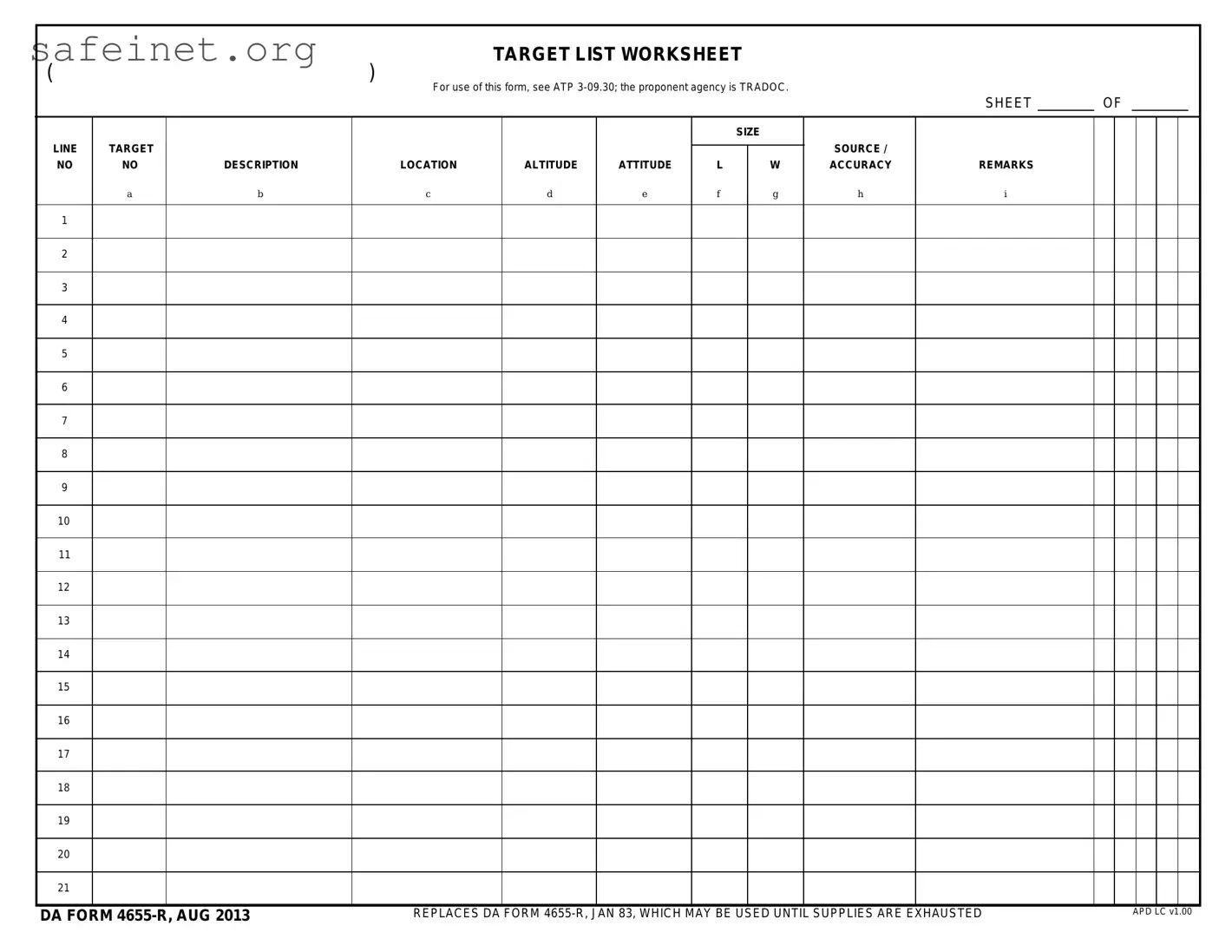What is the DA 4655 R form?
The DA 4655 R form, also known as the Target List Worksheet, is utilized by military personnel to collect and organize information about specific targets. This form is essential for planning and executing operations, as it ensures that details such as target location, altitude, and accuracy are documented properly.
Who is the proponent agency for this form?
The proponent agency for the DA 4655 R form is TRADOC, which stands for the United States Army Training and Doctrine Command. This agency is responsible for the oversight and development of training and operational doctrine for the Army.
When was the DA 4655 R form last updated?
The most recent update for the DA 4655 R form was in August 2013. However, the earlier version from January 1983 may still be in use until supplies of the newer version are exhausted.
What type of information is required on the DA 4655 R form?
The form requires various details, including the target source or description, location, altitude, and attitude. Additionally, it requests measurements of accuracy and includes fields for remarks, allowing users to provide relevant context or additional notes.
How is the DA 4655 R form used in the field?
This form serves as a critical document during military operations. It helps personnel track and manage targets effectively, ensuring that all necessary information is readily available and organized for operational success.
Is there a specific format for filling out this form?
Yes, the DA 4655 R form has a structured format that includes designated fields for information entry. Users should ensure that each section is completed accurately to prevent confusion and ensure effectiveness during operations.
Can the DA 4655 R form be used by any branch of the military?
While primarily designed for specific military operations, the DA 4655 R form can be utilized across various branches of the military that require target listing and tracking. It promotes standardized documentation practices among different units.
What should be done if there are no more DA 4655 R forms available?
If the DA 4655 R forms are not available, users should consult with their supply officer or equipment manager for potential alternatives. In the absence of the official form, it is crucial to maintain documentation of target information to ensure operational readiness.

